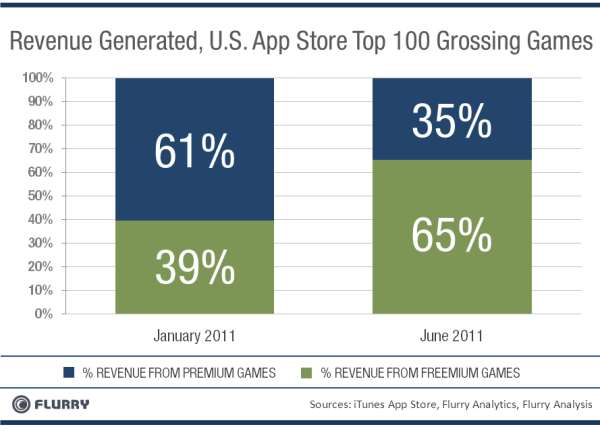One of the important decisions app developers need to make when launching their new products in on business model and pricing.
- Do you go paid and premium hoping that the quality of your brand and product will maintain sales revenues versus pile it high tier 1 pricing (59p/99c)
- Do you go paid and cheap looking to maximise sales volumes to compensate for the lower revenue per unit and try and compete with the flood of 59p apps topping the sales lists
- Or do you go free, strongly increasing the chances of higher download numbers but with the challenge of then monetising those downloads?
- Here is where much of the debate lies in the app product management world. There is the ad-funded route with ad networks and mobile advertising in general starting to mature, but still to become fully established. And then there is the world of freemium and upselling. Make the product free, but then sell other products, access tiers or game levels as an in-app purchase.
So, what do the stats tell us? Reliable and comprehensive data remains difficult to secure, but an interesting study has emerged from Flurry who claim that revenue from free download apps has overtaken premium revenue in the App Store. It’s not quite the same as hearing this stat from Apple, but worthy of note all the same.

Back in January 2011 the stats suggest that pay to download games represented 61% of gaming revenue in the App Store. However, by June 2011 this had shrunk to 35% with free-to-download freemium games representing nearly 2/3 of revenue.
So, there may be less people paying, but more are downloading and among those who are there can be a large enough percentage for the overall revenue to be higher than a straightforward paid product, even at low prices.
But how many are paying? Flurry’s data suggests a variance of between 0.5% and 6% and indeed with variable pricing tiers some of the most engaged may pay considerably more than tier 1 prices to say unlock all levels for a premium.
So should you change your approach? Not necessarily. Every app is unique, as we learned from Instapaper’s case study where the developer withdraw the free version leaving only the premium with positive results. The key is to be flexible and to explore over time which model is going to work best for your product and your suite of products.

